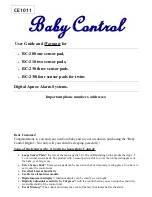
XM310K Calibration Guide
© 2020 Flanders Scientific, Inc.
5
General work-flow notes before you get started
LightSpace is a very flexible calibration system with a large number of potential user defined variables including
but not limited to what test pattern generator will be used, how many test patches will be measured, what type of
probe will be used, and whether the user will calibrate just the 3D LUT or if the user will calibrate using both 3D
and 1D LUT positions. Sample LightSpace work-flows are described below, but there are many valid variations
on these processes. Most of the variations follow the same basic steps so the work-flows described below should
be useful to all users, but if you have questions specific to your work-flow please feel free to contact Support@
FlandersScientific.com for further assistance.
Sample LightSpace Work-flow (Resolve as TPG, Probe CR100, 1D+3D LUT Upload)
Connecting to Resolve as your test pattern generator
Start DaVinci Resolve and create a new timeline. There must be content in your timeline before starting calibra-
tion.
Verify that the monitor is receiving a signal from Resolve then click on the Color Tab in Resolve.
Click on the Workspace menu in Resolve. Select Monitor Calibration. Select LightSpace. A pop-up dialog in Re-
solve will request an IP address, which can be found once you start LightSpace.
Start LightSpace and click on the network manager icon. In the Network Manager window click on enable and
then take note of the IP address listed. Enter the IP address in Resolve and press Connect. Do not close the
Calibration network connection window in Resolve as this will terminate your connection.
Connecting your probe
With the CR100 plugged into your computer return to LightSpace and click on the tools menu.
Select Discoverable Probes and click on Colorimetry Research CR-100 as your calibration probe. Make sure
that Virtual Probe is not selected.
Connecting LightSpace to the XM310K
From LightSpace click on the File menu, then select Upload. From the Upload dialog window select XM as your
device type. Next type in the monitor’s IP address, which can be found on the monitor’s SYSTEM menu.
Next select the Color Gamut memory position where you will save your LUTs. This selection should match the
GAMUT selection made on the monitor as outlined in the pre-calibration steps at the beginning of this document.
Finally, with NULL Cube checked select 1D+3D, then press upload. This will load unity LUTs to both the Front 1D
LUT and 3D LUT memory positions. Next, if a static luminance mode selection (e.g. 100) is active do the same
for the back 1D LUT selection, with NULL cube checked, press upload. Nulling the back 1D LUT in Dynamic
Luminance mode is not necessary as only the front 1D and 3D LUTs are used, the back 1D is automatically
disabled in this mode. Loading NULL LUTs clears previous LUT based calibrations allowing for a neutral starting
position for display profiling.
Once NULL LUTs are loaded in all positions press Close within the upload dialog window.



























